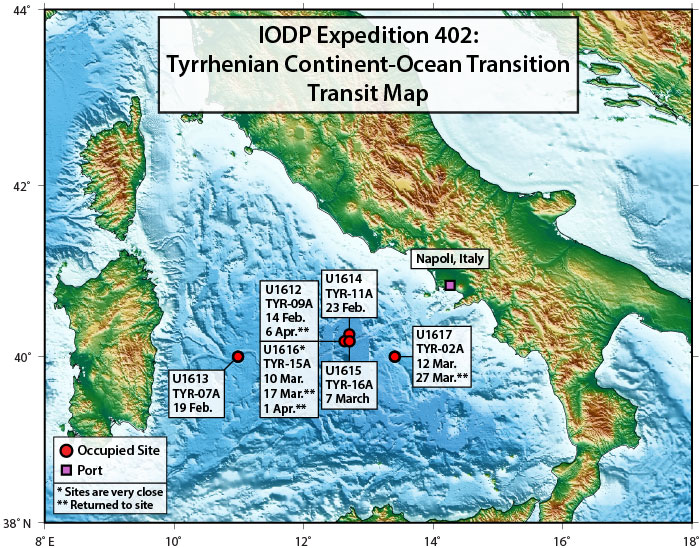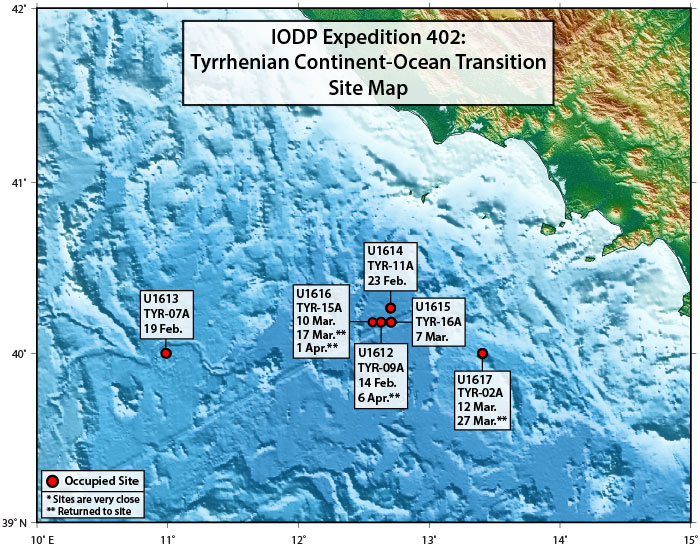JOIDES Resolution daily reports, weekly reports, and site summaries
Expedition reports available from this page are preliminary, have not been peer-reviewed, and may be subject to change. These reports are for informational purposes and are not intended for citation in peer-reviewed publications.
IODP Expedition 402
Tyrrhenian Continent–Ocean Transition
Expedition 402 began on 9 February 2024 in Napoli, Italy, and ended on 8 April 2024 in Napoli, Italy.
Site Summaries
- Site U1612 (PDF)
- Site U1613 (PDF)
- Site U1614 (PDF)
- Site U1615 (PDF)
- Site U1616 (PDF)
- Site U1617 (PDF)
Weekly Science Reports
- Week 1 report (PDF; 23 February 2024)
- Week 2 report (PDF; 29 February 2024)
- Week 3 report (PDF; 7 March 2024)
- Week 4 report (PDF; 15 March 2024)
- Week 5 report (PDF; 21 March 2024)
- Week 6 report (PDF; 27 March 2024)
- Week 7 report (PDF; 4 April 2024)
Daily Science Reports
Photos, Video & Blogs
Ship Reports from Other Expeditions
- Expedition 401: Mediterranean–Atlantic Gateway Exchange
- Expedition 400T: Transit and Non-IODP
- Expedition 400: NW Greenland Glaciated Margin
- Expedition 395: Reykjanes Mantle Convection and Climate
- Expedition 399: Building Blocks of Life, Atlantis Massif
- Expedition 398: Hellenic Arc Volcanic Field
- Ship reports for all previous expeditions
- Detailed information by expedition

